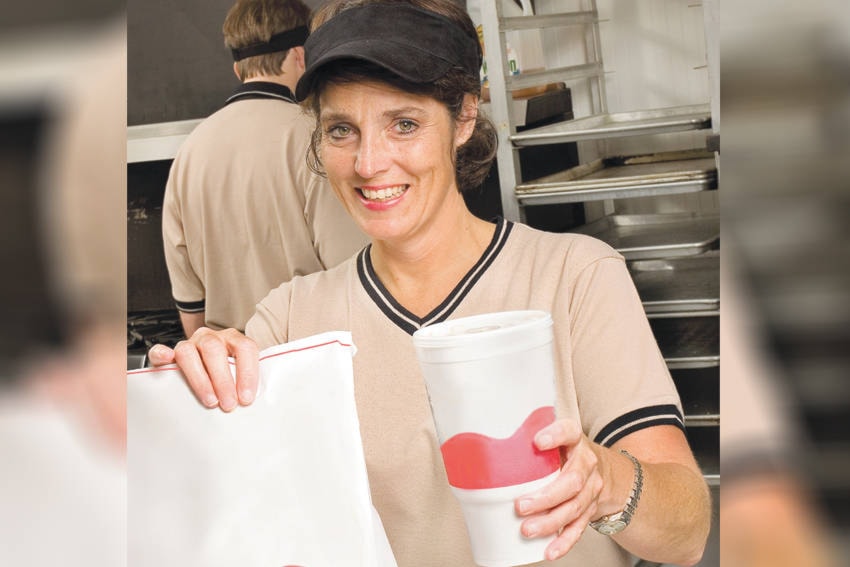BY MARGOT THOMAIDIS
Lately I’ve been hearing a lot about how Nanaimo wants to become better at safely moving people around, meaning we want convenient and safe routes for pedestrians, cyclists, bus-goers, and drivers alike. It isn’t too much to ask.
The downtown mobility hub project is part of this, as it seeks to improve intersections, cycling routes, transit, and parking in the downtown core. This is all fantastic stuff, but I think Nanaimo should consider removing one notorious culprit from the bigger picture before moving forward on mobility initiatives: drive-thrus.
I am not suggesting that we get rid of existing drive-thrus. However, we should prohibit the development of any new ones. This isn’t difficult to achieve. It would mean amending the definition in the zoning bylaw to remove the provision for a drive-thru window. It is a low-hanging fruit that could have immensely positive impacts on the future of our city.
Perhaps the biggest case against more drive-thrus is that they are unsafe. Numerous transportation studies have proven that the extra driveways required at most drive-thrus increases the likelihood that crashes might happen between vehicles, pedestrians, and cyclists. The urban design of drive-thrus lulls drivers into a false sense of being in a vehicle-only space, when in reality there are many potential points of conflict between pedestrians and cars in these plazas.
A newer Canada-wide study also suggests that drive-thrus have serious impacts on public health. They increase traffic congestion, air, and noise pollution, and they contribute to unhealthy eating and inactive lifestyles.
Some studies suggest that up to 70 per cent of all transactions at fast-food restaurants happen at drive-thrus, and as mobile-ordering apps increase, that percentage is predicted to grow. It is also becoming common for drive-thrus to increase their capacity to two lanes, in order to accommodate more customers and their vehicles.
All that extra idling contributes to greenhouse gas emissions. If all Canadian motorists avoided idling for three minutes per day (often half the amount of time spent at a drive-thru), CO2 emissions would be reduced by 1.4 million tonnes annually, which seems like a drop in the bucket, but is not insignificant in the long run.
Even if every vehicle somehow becomes electric in the next 20 years, those pesky traffic congestion problems, unhealthy consumption issues, and awful streetscapes will remain.
You might wonder what all the huff is about – why can’t we have our hamburger and eat it, too? Drive-thrus could still be built in the outer rings of the city along the highways and arterial roads, and we could allow for fewer drive-thrus in our walkable urban core.
But if we are trying to address past urban planning issues through this downtown mobility hub project, why would we allow for the development of more spaces in the city that are unsafe and unhealthy, while at the same time embarking on a project to try to transform it to be more safe and healthy?
Why not focus our efforts on removing the possibility that these types of developments ever get built in the first place?
Nanaimo is increasing in density. In 50 years, all those areas along the outskirts of downtown (where we think drive-thrus are ‘harmless’) will become denser with residential and commercial development. In fact, this is already happening in many places across the city. These drive-thrus are another urban planning obstacle to overcome, yet we still allow for their development.
Many other municipalities across Canada have bans in place, including Central Saanich, Comox, Ladysmith and Vancouver.
Council needs to send the message to fast-food restaurants that drive-thrus are no longer welcome in our city.
Margot Thomaidis is a master of community planning graduate degree candidate in her final year at Vancouver Island University.
